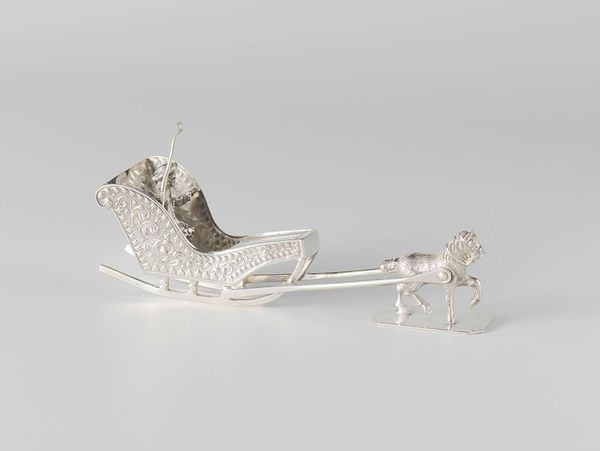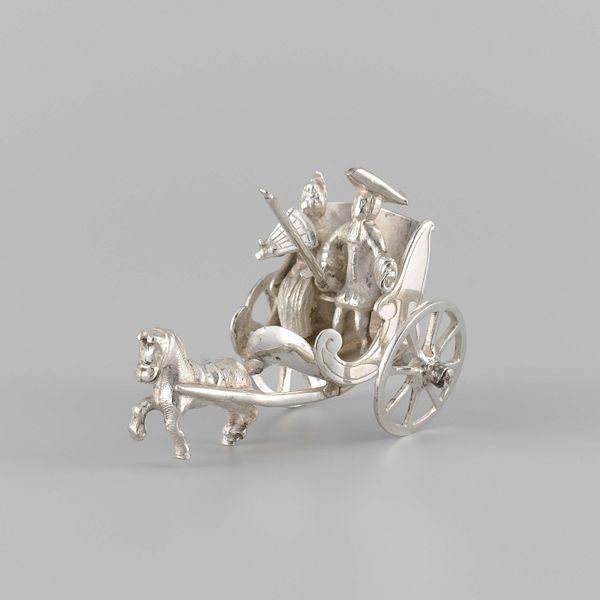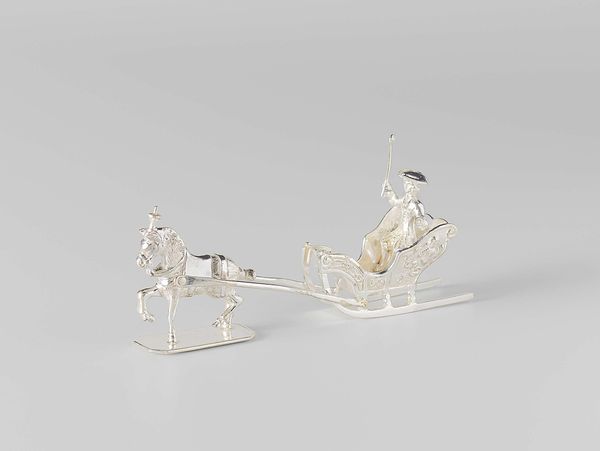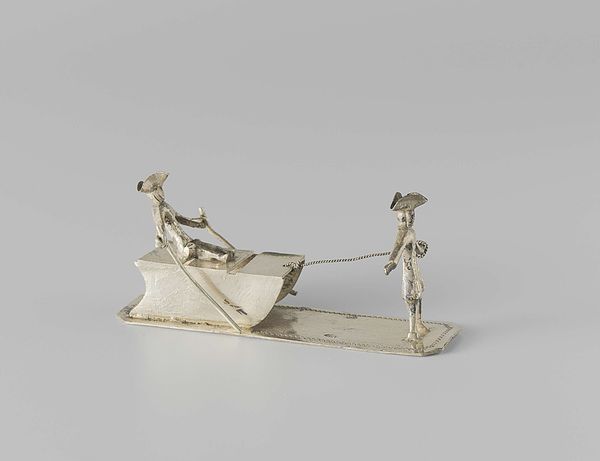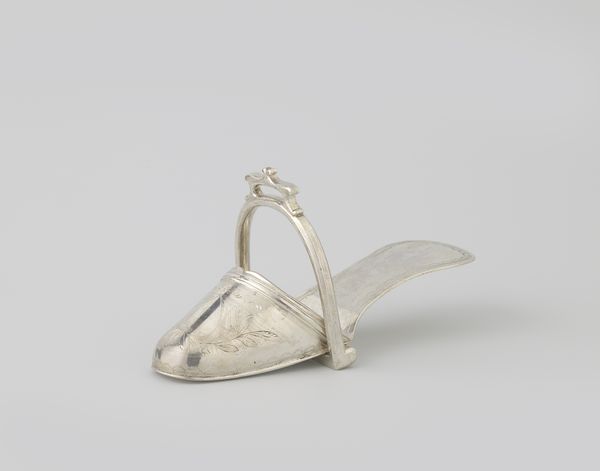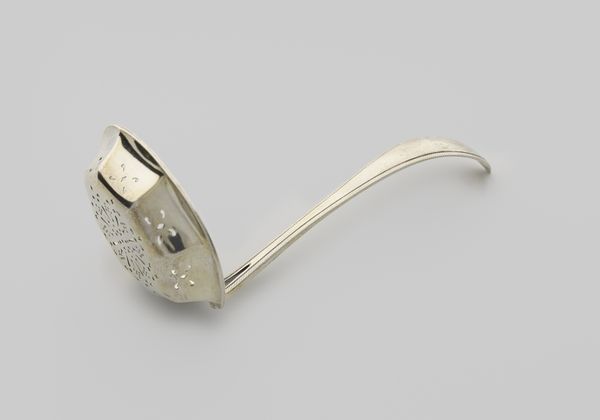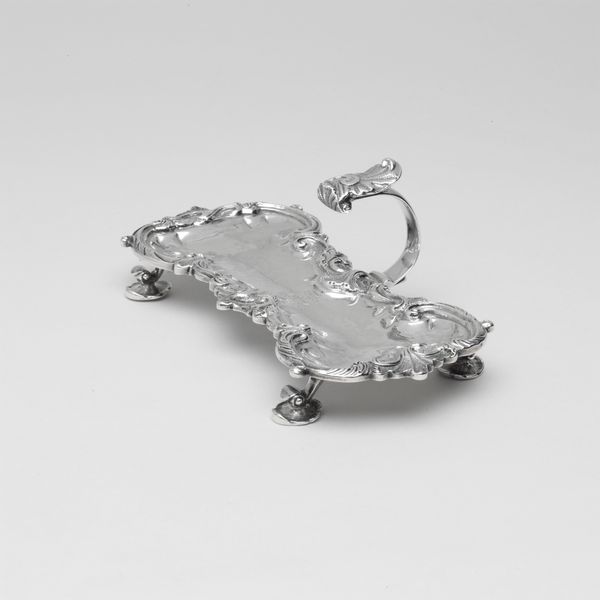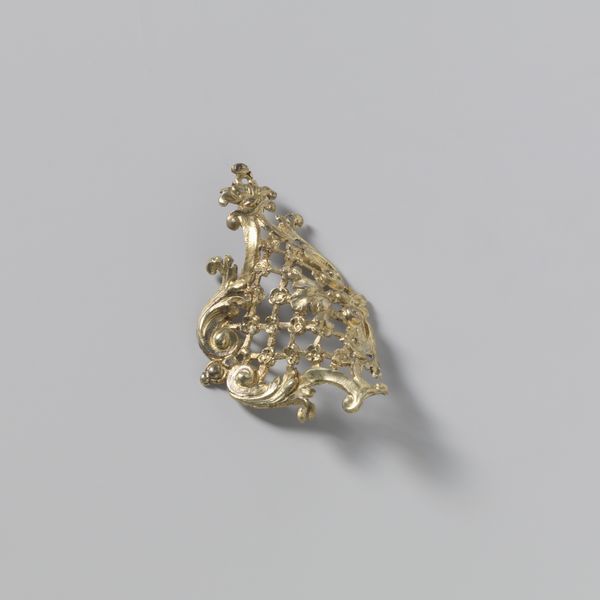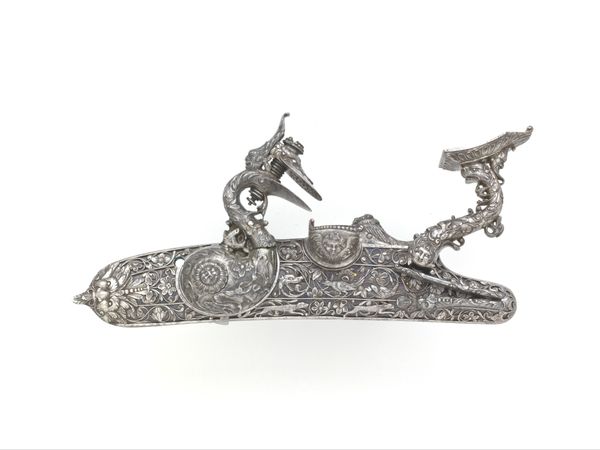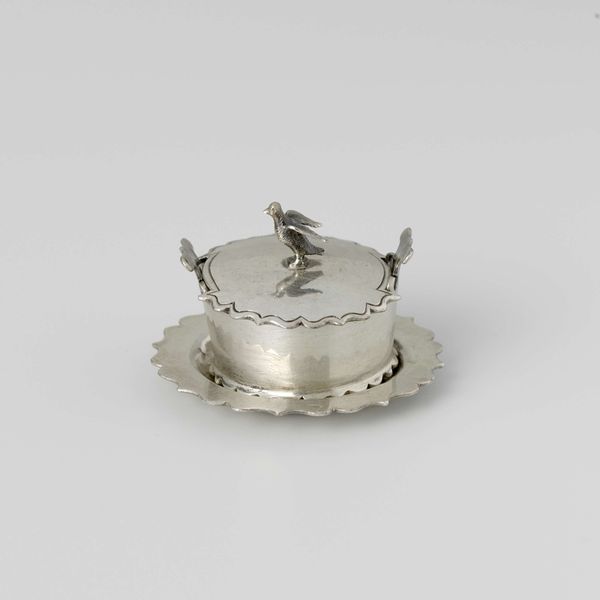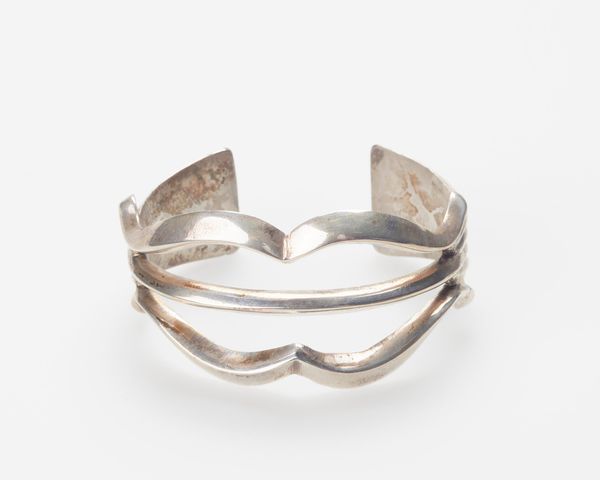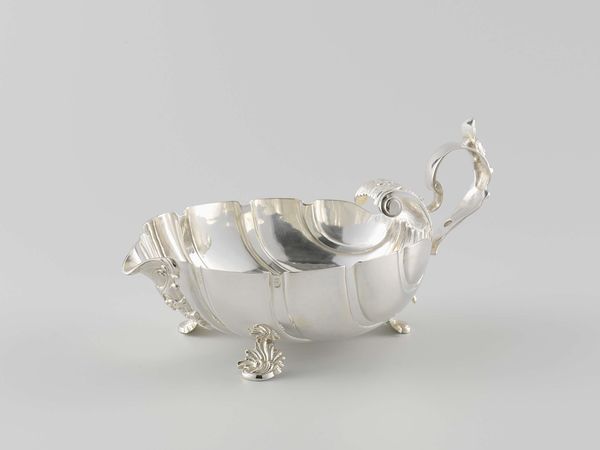
silver, sculpture
#
silver
#
baroque
#
figuration
#
sculpture
#
genre-painting
#
miniature
Dimensions: length 5.9 cm, height 3.4 cm, weight 16.52 gr
Copyright: Rijks Museum: Open Domain
Curator: Our next piece is a charming miniature sculpture from around 1725 entitled "Man met kruiwagen," or "Man with Wheelbarrow" by Frederik van (I) Strant. Editor: It’s striking! The polished silver really emphasizes the delicate construction, and it almost feels… optimistic? Even with such a humble subject. Curator: It’s fascinating because it presents everyday life, but elevated by the precious metal. It reflects a broader interest in genre scenes during the Baroque era, bringing the lower classes into the artistic fold. The craftsmanship demonstrates Strant’s role in that evolution. Editor: Absolutely, seeing such a functional object elevated like this brings forward the labor involved. Think about the skill required to shape the silver into something like the spokes of that tiny wheel. Did Strant have training as a silversmith before creating such miniatures? Curator: While little is known about Strant’s biography, such detailed work suggests a background in metalwork or similar crafts. This also makes me consider the work's commission. Who would desire a silver miniature of a common laborer and his wheelbarrow? Editor: That speaks to class, right? Was this a display of wealth, or was it something else? What purpose did it serve besides art object? Curator: Well, such miniatures were often collected by the wealthy elite, kept in cabinets of curiosities, displayed alongside other exotic objects. Its miniature nature allows a complete control. You possess the world, even a part representing manual labour, at your fingertips. The miniature flattens social classes through the whim of collecting. Editor: And considering its function as art, one could look into the symbolism attached to wheelbarrows— perhaps that helps further ground the art in labor. I can almost imagine how light plays across its surfaces. Curator: It offers a fascinating insight into the aesthetics and social attitudes of the 18th century. To memorialize in art the importance of physical effort reveals societal awareness and hierarchy. Editor: Precisely, by imbuing such common tasks with artistic value through material and technique, it transforms our understanding of art as related to its socio-economic origins. Curator: It makes me see this small piece in a new, expanded way. Editor: Same here. Looking closer at materiality always seems to unlock unexpected narratives.
Comments
No comments
Be the first to comment and join the conversation on the ultimate creative platform.
